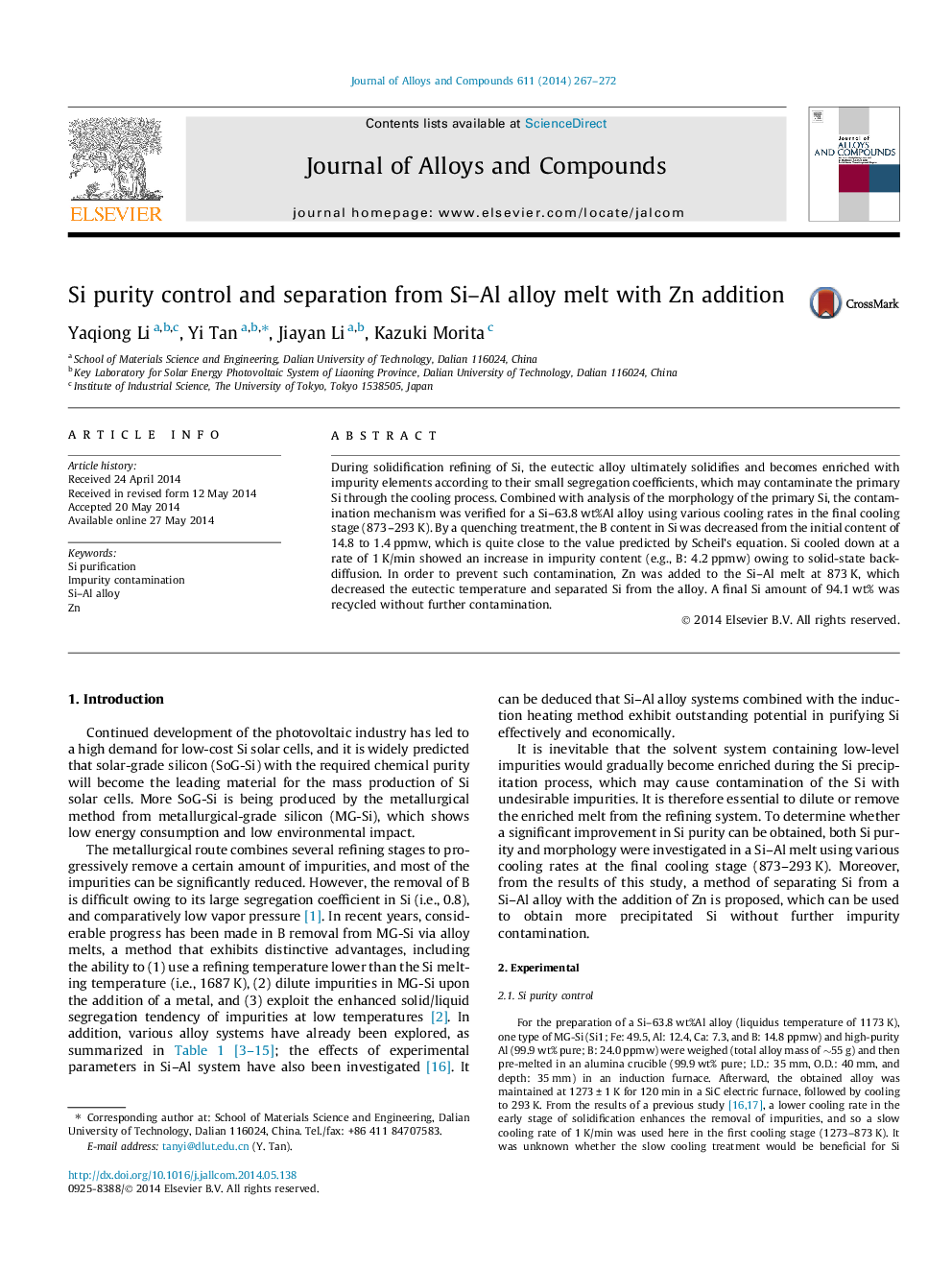| Article ID | Journal | Published Year | Pages | File Type |
|---|---|---|---|---|
| 1610473 | Journal of Alloys and Compounds | 2014 | 6 Pages |
•Solid-state back-diffusion of impurity was controlled to improve the Si purity.•Zn addition was designed to separate Si from Si–Al alloy.•Zn addition favors more Si precipitation with low B content.
During solidification refining of Si, the eutectic alloy ultimately solidifies and becomes enriched with impurity elements according to their small segregation coefficients, which may contaminate the primary Si through the cooling process. Combined with analysis of the morphology of the primary Si, the contamination mechanism was verified for a Si–63.8 wt%Al alloy using various cooling rates in the final cooling stage (873–293 K). By a quenching treatment, the B content in Si was decreased from the initial content of 14.8 to 1.4 ppmw, which is quite close to the value predicted by Scheil’s equation. Si cooled down at a rate of 1 K/min showed an increase in impurity content (e.g., B: 4.2 ppmw) owing to solid-state back-diffusion. In order to prevent such contamination, Zn was added to the Si–Al melt at 873 K, which decreased the eutectic temperature and separated Si from the alloy. A final Si amount of 94.1 wt% was recycled without further contamination.
